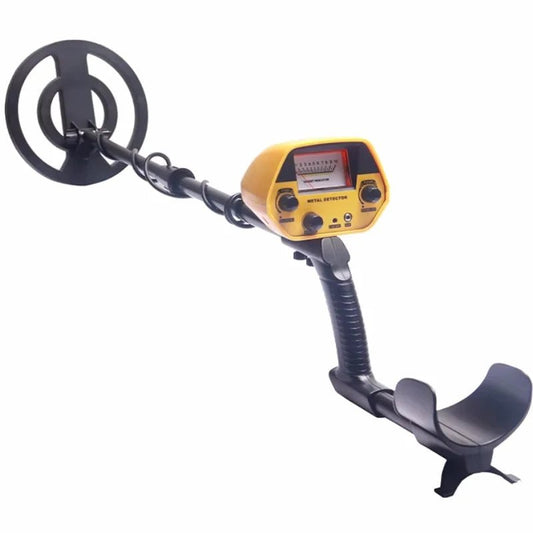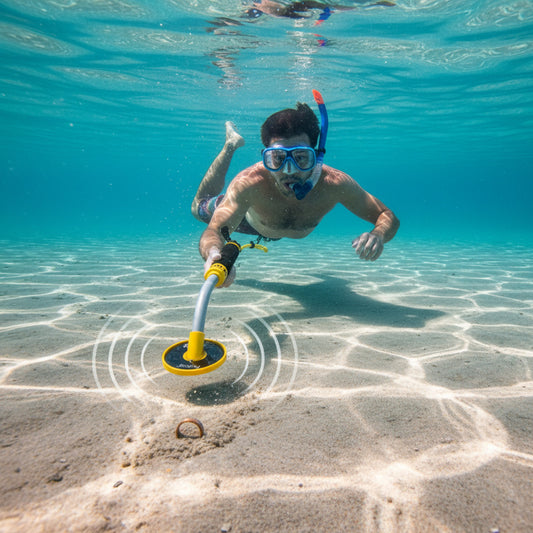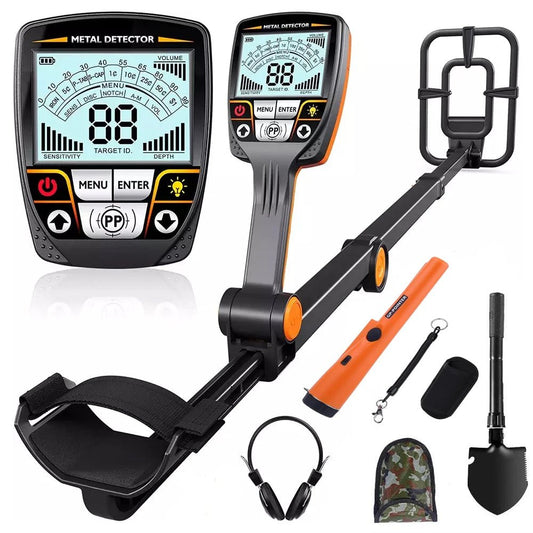
Gold Prospecting in Arizona: Lost Dutchman’s Mine and Desert Gold
Share
Arizona’s sunbaked deserts have lured gold seekers for generations, each drawn by the promise of riches and the thrill of the unknown. From the infamous legend of the Lost Dutchman’s Mine to the glitter of placer gold in dry washes, gold prospecting in Arizona is as much about adventure as it is about discovery.
This guide blends practical advice with the spirit of a true treasure hunter, helping you navigate the legal landscape, the best goldfields, and the wild beauty of the Grand Canyon State.
The Legend of the Lost Dutchman’s Mine
No Arizona gold story is complete without the Lost Dutchman’s Mine—a legend that has haunted prospectors’ dreams since the late 1800s.

Tucked somewhere in the rugged Superstition Mountains east of Phoenix, the mine is said to hold untold riches, hidden by Jacob Waltz (“the Dutchman”) and never rediscovered after his death. Over the decades, countless seekers have braved the heat, rattlesnakes, and treacherous canyons in pursuit of this elusive lode. Some return with stories of mysterious clues and lost trails; others are swallowed by the desert, leaving only whispers behind.
For many, the Lost Dutchman’s Mine isn’t just about gold—it’s about the adventure, the camaraderie around a campfire, and the hope that tomorrow’s sunrise might reveal a glint of yellow in the red rock.
Is Gold Prospecting Legal in Arizona?

Gold prospecting is legal and popular in Arizona, but there are important rules to follow. Most public lands managed by the Bureau of Land Management (BLM) and National Forest Service are open to prospecting, but many areas are already claimed or protected. Always check land status before you dig:
-
Public Land: Recreational prospecting is allowed on many BLM and Forest Service lands. However, you must respect active mining claims—trespassing on a claim is illegal.
-
State Trust Land: Requires a permit for recreational use.
-
Private Land: Always obtain written permission from the landowner.
-
National Parks and Monuments: Prospecting is strictly prohibited.
Before setting out, consult the BLM’s Arizona Field Office or use online mapping tools to research claim boundaries and land status.
Where to Find Gold in Arizona

Arizona’s goldfields are legendary, with a history stretching back to Spanish explorers and the great gold rushes of the 19th century. Here are some of the best places to look for desert gold:
The Superstition Mountains
Home of the Lost Dutchman’s Mine, these mountains are steeped in legend and danger. While the mine remains hidden, the area is rich in placer gold—especially in dry washes and gulches. Prospectors should be prepared for rugged hiking and extreme conditions.
Lynx Creek (Prescott National Forest)
One of Arizona’s most popular public gold panning areas, Lynx Creek has produced millions in placer gold. The Forest Service designates specific areas for panning and sluicing—no motorized equipment allowed.
Rich Hill and Weaver Mountains
Near Congress and Yarnell, Rich Hill is famous for its large gold nuggets and dry placer deposits. Metal detecting and drywashing are popular methods here, but much of the land is claimed—research before you go.
Bradshaw Mountains
This historic mining region north of Phoenix still yields gold in creeks, washes, and old tailings. Look for exposed bedrock and inside bends of dry washes.
Gila River and San Domingo Wash
Both areas have a long history of placer gold. Dry panning and metal detecting are productive, especially after seasonal rains.
Gold Prospecting Methods for Arizona’s Desert

The Arizona desert demands creativity and grit from its prospectors. Here’s how real treasure hunters tackle the terrain:
-
Dry Panning: With little water, dry panning is essential. Use a wide, shallow pan and gentle swirling to separate gold from sand.
-
Drywashing: A portable drywasher blows away light material, leaving gold behind. It’s dusty work, but effective in arid washes.
-
Metal Detecting: Many of Arizona’s biggest nuggets have been found with detectors. Focus on exposed bedrock, old tailings, and areas with visible quartz.
-
Crevicing: Gold settles in cracks and crevices in bedrock. Use a crevice tool or screwdriver to pry out hidden flakes.
Tips from the Desert Trail
-
Start Early: Arizona’s heat is unforgiving. Hit the washes at dawn and rest by midday.
-
Bring Plenty of Water: Dehydration is a real danger—carry more than you think you’ll need.
-
Watch for Wildlife: Rattlesnakes, scorpions, and javelinas share the goldfields. Stay alert and respect their space.
-
Join a Club: Groups like the Arizona Association of Gold Prospectors offer claims access, advice, and camaraderie.
-
Respect the Land: Fill your holes, pack out trash, and leave the desert as wild as you found it.
What Can You Find?
Arizona prospectors have unearthed:
-
Placer gold flakes and nuggets—sometimes as big as your thumb
-
Old mining tools, bullets, and relics from the gold rush era
-
Quartz specimens with visible gold
-
The occasional lost coin or jewelry from more recent visitors
The big score is rare, but every glint of gold is a reward for persistence and passion.
The Human Side of Gold Prospecting
Ask any Arizona prospector, and they’ll tell you: the real treasure isn’t just in the pan—it’s in the journey. It’s the crunch of boots on gravel at sunrise, the thrill of a faint beep from your detector, and the stories shared around a campfire under a sky blazing with stars. Whether you find a fortune or just a handful of dust, you’ll join a tradition stretching back centuries—a brotherhood and sisterhood of dreamers, risk-takers, and explorers.
Conclusion
Gold prospecting in Arizona is more than a hobby—it’s a calling. With the right knowledge, respect for the land, and a spirit of adventure, you can chase legends like the Lost Dutchman and write your own chapter in the story of desert gold. So pack your gear, follow the old trails, and let the desert whisper its secrets—fortune favors the bold.




